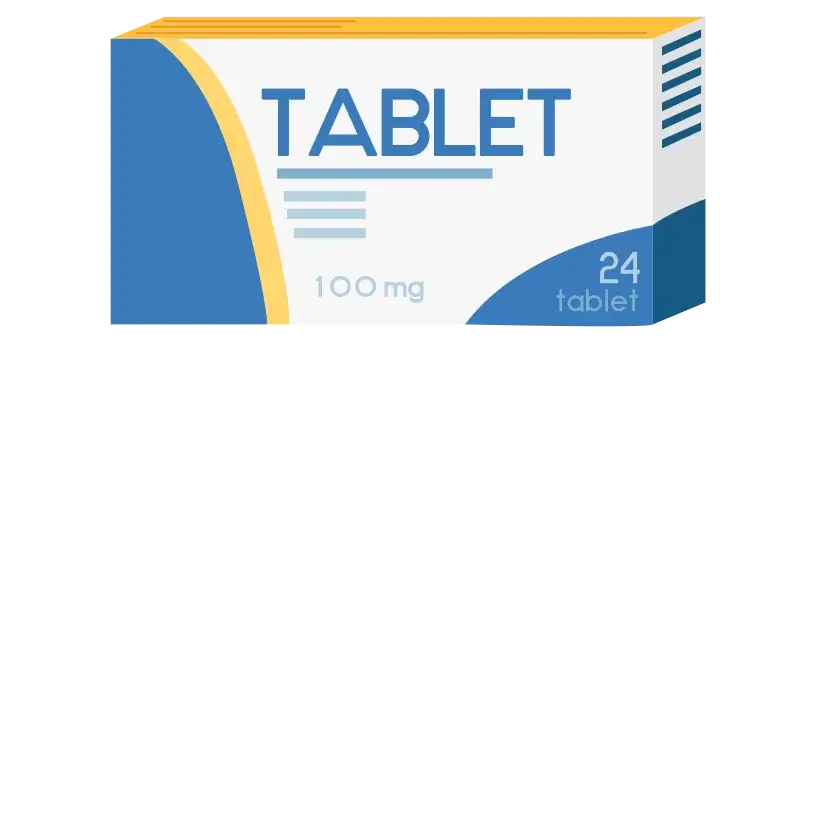Menu

Some expectant mothers might experience a rise in blood sugar levels during pregnancy. This is referred to as gestational diabetes mellitus (GDM) or simply gestational diabetes. Studies show that It usually occurs during the second and third trimesters of pregnancy.
This condition affects people who didn’t have diabetes before becoming pregnant. According to the Centre for Disease Control and Prevention, each year, gestational diabetes impacts approximately 2% to 10% of pregnancies in the United States.
Unlike type 1 diabetes, where there’s a lack of insulin production, gestational diabetes occurs due to hormonal changes that make insulin less effective. The good news is that once the pregnancy ends, the symptoms of gestational diabetes typically disappear. It’s a temporary condition that resolves after delivery.
Gestational diabetes typically doesn’t present noticeable symptoms. Often, it’s only detected through routine screening for gestational diabetes, which involves testing blood sugar levels. However, according to NHS, in cases where blood sugar levels become excessively high (hyperglycemia), some women may experience symptoms such as:
It’s important to note that some of these symptoms are typical occurrences during pregnancy and may not necessarily indicate gestational diabetes. If you have concerns about any symptoms you’re experiencing, it’s best to discuss them with your midwife or doctor for further evaluation and guidance.
Although the exact cause of gestational diabetes mellitus (GDM) is not fully understood, there are theories regarding why it occurs.
Insulin is a hormone made by the pancreas vital in how the body uses and processes fats, carbohydrates, and sugars. It helps regulate the metabolism of these nutrients and assists in converting sugar into energy that the body can use. The placenta provides nutrients and hormones during pregnancy to support the growing foetus. Some of these hormones, such as oestrogen, cortisol, and human placental lactogen, can interfere with insulin’s action, leading to a condition known as insulin resistance.
This means that even though the body is producing insulin, it’s not able to use it properly to regulate blood sugar levels. This interference with insulin function typically begins around the 20—to 24-week mark of pregnancy.
As the pregnancy progresses and the placenta continues to grow, the production of these hormones increases, further exacerbating insulin resistance. Normally, the pancreas responds by producing more insulin to compensate for this resistance. However, if the pancreas is unable to produce enough insulin to counteract the effects of the placental hormones, gestational diabetes can develop.
Gestational diabetes can develop in anyone, and researchers haven’t identified the precise reasons why some women develop it while others don’t. However, some women who develop gestational diabetes have no identified risk factors.
If gestational diabetes isn’t properly managed, it can result in elevated blood sugar levels. High blood sugar can pose risks for both the mother and baby.
High blood sugar levels in women with gestational diabetes can heighten the risk of early (preterm) labour and delivery. Alternatively, healthcare providers might recommend an early delivery if the baby is predicted to be larger than average.
Macrosomia is a condition where a baby is significantly larger than average. During pregnancy, the foetus receives all its nutrients from the mother’s blood. If the mother’s blood has excess glucose, the foetus’s pancreas senses this and produces more insulin to process the glucose.
The surplus glucose is converted into fat by the foetus, contributing to excessive growth. Macrosomia can cause complications during delivery because larger babies may have difficulty passing through the birth canal. This situation increases the likelihood of injuries to both the mother and the baby during childbirth.
Hypoglycemia, or low blood sugar, can occur in newborns shortly after delivery. This happens when the mother’s blood sugar levels have been consistently high during pregnancy, leading to the foetus having elevated insulin levels. After birth, the baby continues to have high insulin levels but no longer receives the high sugar levels from the mother.
As a result, the baby’s blood sugar level drops significantly. Healthcare providers check the baby’s blood sugar after birth, and if it’s too low, they may need to administer glucose intravenously to raise the levels to a healthy range.
Respiratory distress syndrome is when newborn babies have difficulty breathing due to underdeveloped or immature lungs. In the case of babies born to mothers with gestational diabetes, there is an increased risk of respiratory distress syndrome because high blood sugar levels in the mother can affect the development of the baby’s lungs.
Experiencing gestational diabetes can increase the risk of babies developing obesity and type 2 diabetes later in life. This heightened risk stems from exposure to high blood sugar levels during pregnancy, which can affect the baby’s metabolism and predispose them to these conditions as they grow older.
Stillbirth, the loss of a baby before or shortly after birth, is a potential consequence of untreated gestational diabetes. When gestational diabetes is not properly managed, it can lead to complications that increase the risk of stillbirth. These complications may include issues with the placenta, such as reduced blood flow or oxygen supply to the baby, as well as other pregnancy-related complications.
Experiencing gestational diabetes in one pregnancy increases the likelihood of developing it again in future pregnancies. Additionally, women who have had gestational diabetes are at a higher risk of developing type 2 diabetes as they age.
Gestational diabetes increases the likelihood of developing high blood pressure and a condition called preeclampsia during pregnancy. Preeclampsia is a serious complication characterised by high blood pressure and other symptoms that can endanger both the mother’s and the baby’s health.
Without proper management, preeclampsia can lead to severe complications such as organ damage and even death.
Depression is a medical condition characterised by feelings of sadness and a lack of interest in once enjoyable activities. It can impact one’s thoughts, emotions, and behaviours and disrupt daily functioning.
Anxiety disorders, including generalised anxiety disorder and panic disorder, can also manifest during pregnancy and postpartum, leading to excessive worry, restlessness, and physical symptoms such as heart palpitations or difficulty breathing.
Jaundice is a medical condition that occurs when a baby’s liver is not fully developed or functioning properly. As a result, the liver struggles to process a substance called bilirubin, produced when red blood cells break down. When bilirubin levels become elevated in the baby’s bloodstream, it can cause the skin and whites of the eyes to appear yellowish.
High blood sugar levels in women with gestational diabetes can heighten the risk of early (preterm) labour and delivery. Alternatively, healthcare providers might recommend an early delivery if the baby is predicted to be larger than average.
Macrosomia is a condition where a baby is significantly larger than average. During pregnancy, the foetus receives all its nutrients from the mother’s blood. If the mother’s blood has excess glucose, the foetus’s pancreas senses this and produces more insulin to process the glucose.
The surplus glucose is converted into fat by the foetus, contributing to excessive growth. Macrosomia can cause complications during delivery because larger babies may have difficulty passing through the birth canal. This situation increases the likelihood of injuries to both the mother and the baby during childbirth.
Hypoglycemia, or low blood sugar, can occur in newborns shortly after delivery. This happens when the mother’s blood sugar levels have been consistently high during pregnancy, leading to the foetus having elevated insulin levels. After birth, the baby continues to have high insulin levels but no longer receives the high sugar levels from the mother.
As a result, the baby’s blood sugar level drops significantly. Healthcare providers check the baby’s blood sugar after birth, and if it’s too low, they may need to administer glucose intravenously to raise the levels to a healthy range.
Respiratory distress syndrome is when newborn babies have difficulty breathing due to underdeveloped or immature lungs. In the case of babies born to mothers with gestational diabetes, there is an increased risk of respiratory distress syndrome because high blood sugar levels in the mother can affect the development of the baby’s lungs.
Experiencing gestational diabetes can increase the risk of babies developing obesity and type 2 diabetes later in life. This heightened risk stems from exposure to high blood sugar levels during pregnancy, which can affect the baby’s metabolism and predispose them to these conditions as they grow older.
Stillbirth, the loss of a baby before or shortly after birth, is a potential consequence of untreated gestational diabetes. When gestational diabetes is not properly managed, it can lead to complications that increase the risk of stillbirth. These complications may include issues with the placenta, such as reduced blood flow or oxygen supply to the baby, as well as other pregnancy-related complications.
Experiencing gestational diabetes in one pregnancy increases the likelihood of developing it again in future pregnancies. Additionally, women who have had gestational diabetes are at a higher risk of developing type 2 diabetes as they age.
Gestational diabetes increases the likelihood of developing high blood pressure and a condition called preeclampsia during pregnancy. Preeclampsia is a serious complication characterised by high blood pressure and other symptoms that can endanger both the mother’s and the baby’s health.
Without proper management, preeclampsia can lead to severe complications such as organ damage and even death.
Depression is a medical condition characterised by feelings of sadness and a lack of interest in once enjoyable activities. It can impact one’s thoughts, emotions, and behaviours and disrupt daily functioning.
Anxiety disorders, including generalised anxiety disorder and panic disorder, can also manifest during pregnancy and postpartum, leading to excessive worry, restlessness, and physical symptoms such as heart palpitations or difficulty breathing.
Jaundice is a medical condition that occurs when a baby’s liver is not fully developed or functioning properly. As a result, the liver struggles to process a substance called bilirubin, produced when red blood cells break down. When bilirubin levels become elevated in the baby’s bloodstream, it can cause the skin and whites of the eyes to appear yellowish.
The American Diabetes Association (ADA) recommends that healthcare providers should regularly screen pregnant individuals for signs of gestational diabetes.
Even if you have no prior history of diabetes and your blood sugar levels are within the normal range at the start of pregnancy, your doctor will likely perform a screening for gestational diabetes around the 24th to 28th week of pregnancy.
The screening process may have two parts. During the glucose challenge test, you’ll be asked to drink a sweet liquid containing a specific amount of glucose. About an hour later, your healthcare provider will take a blood sample to measure your blood sugar level. If your blood sugar level is elevated during this initial test, further testing, known as a glucose tolerance test, may be recommended.
During the glucose tolerance test, you’ll be asked to fast overnight and drink a more concentrated glucose solution. Blood samples will be taken at intervals over a few hours to track how your body processes the glucose. This test provides more detailed information about your body’s ability to regulate blood sugar levels and can help diagnose gestational diabetes.
Preventing gestational diabetes entirely isn’t possible, but adopting healthy habits before pregnancy is beneficial. For people who have had gestational diabetes, these healthy choices may also lower the risk of experiencing it again in future pregnancies or developing type 2 diabetes later on.
Stay physically active: Exercising before and during pregnancy can help prevent gestational diabetes. Most days, do 30 minutes of moderate activity, like taking brisk walks or swimming. Small things like parking farther away or taking short walks can add up. The key is to move your body regularly to stay healthy during pregnancy.
Maintain a healthy diet: Opt for foods high in fibre and low in fat and calories, such as fruits, vegetables, and whole grains. Aim for various healthy foods to ensure you get a range of nutrients without sacrificing taste or nutrition.
Be mindful of portion sizes to avoid overeating. By making these dietary choices, you can help maintain stable blood sugar levels and support a healthy pregnancy.
Beginning pregnancy at a healthy weight: If you’re planning to conceive, shedding excess weight beforehand might improve your chances of having a successful pregnancy. Making sustainable changes to your diet, like incorporating more vegetables and fruits, can benefit you throughout pregnancy.
Avoid gaining more than the recommended weight gain: It’s normal and healthy to gain some weight during pregnancy, but it’s important not to exceed the recommended amount. Rapid or excessive weight gain can raise the risk of gestational diabetes. Consult your healthcare provider to determine the appropriate amount of weight gain based on your circumstances.
Even with the adoption of these healthy habits, there remains a possibility of developing gestational diabetes, especially in individuals with a family history of the condition.
According to the NHS, Gestational diabetes can be effectively managed through various strategies. This includes closely monitoring blood sugar levels, making lifestyle changes, and, in certain instances, taking medication or insulin injections as prescribed by a healthcare provider.

Checking your blood sugar level involves using a testing kit provided to you. This kit includes a finger-pricking device and testing strips. You’ll be instructed on how to correctly test your blood sugar level, when and how often to test (usually before breakfast and 1 hour after each meal), and what target level to aim for, typically measured in millimoles of glucose per litre of blood (mmol/l).
It’s important to share your blood sugar levels with your healthcare team for appropriate advice and treatment.
If you take insulin and experience issues with low blood sugar (hypoglycemia) or unstable blood sugar levels, your care team may offer you a continuous glucose monitor (CGM). This device is a small sensor worn on your skin that wirelessly sends data to a receiver or mobile phone, allowing you to monitor your blood sugar levels at any time

Changing your diet can help regulate your blood sugar levels during pregnancy. You’ll likely be referred to a dietitian who can provide personalised advice on planning healthy meals. Some common recommendations may include:

Exercise can help lower blood sugar levels, which is important for managing gestational diabetes. Your healthcare provider will offer guidance on safe exercise options during pregnancy.
Aiming for at least 150 minutes (2 hours and 30 minutes) of moderate-intensity activity per week, along with strength exercises on two or more days a week, is commonly recommended.

If your blood sugar levels remain unstable despite changes in diet and regular exercise or are very high upon diagnosis, your healthcare provider may prescribe medication. This could include tablets, typically metformin, or insulin injections.

Insulin may be recommended during pregnancy if metformin is not suitable or ineffective, if blood sugar levels remain high or if there are concerns about the baby’s size or excessive fluid in the womb.
Insulin is administered via an insulin pen, the process is typically painless due to the small needles used for subcutaneous injection. Patients receive guidance on injection sites and how to use the pen. Dosage instructions vary depending on the type of insulin and may involve administration before meals, bedtime, or waking. The amount of insulin you need may change to keep your blood sugar levels in check as your pregnancy progresses.
Insulin can sometimes lower your blood sugar too much, so it’s important to learn about the signs and symptoms of low blood sugar (hypoglycemia) and how to prevent and treat it. Symptoms of low blood sugar include feeling shaky, sweaty, hungry, paler than usual, or having difficulty concentrating.

Checking your blood sugar level involves using a testing kit provided to you. This kit includes a finger-pricking device and testing strips. You’ll be instructed on how to correctly test your blood sugar level, when and how often to test (usually before breakfast and 1 hour after each meal), and what target level to aim for, typically measured in millimoles of glucose per litre of blood (mmol/l).
It’s important to share your blood sugar levels with your healthcare team for appropriate advice and treatment.
If you take insulin and experience issues with low blood sugar (hypoglycemia) or unstable blood sugar levels, your care team may offer you a continuous glucose monitor (CGM). This device is a small sensor worn on your skin that wirelessly sends data to a receiver or mobile phone, allowing you to monitor your blood sugar levels at any time.

Changing your diet can help regulate your blood sugar levels during pregnancy. You’ll likely be referred to a dietitian who can provide personalised advice on planning healthy meals. Some common recommendations may include:

Exercise can help lower blood sugar levels, which is important for managing gestational diabetes. Your healthcare provider will offer guidance on safe exercise options during pregnancy. Aiming for at least 150 minutes (2 hours and 30 minutes) of moderate-intensity activity per week, along with strength exercises on two or more days a week, is commonly recommended.

If your blood sugar levels remain unstable despite changes in diet and regular exercise or are very high upon diagnosis, your healthcare provider may prescribe medication. This could include tablets, typically metformin, or insulin injections.
Studies indicate that gestational diabetes is categorised into two classes. Class A1 is the type of gestational diabetes that can be controlled solely through dietary measures without the need for insulin or oral medications. Class A2 is the type of gestational diabetes that requires additional treatment with insulin or oral medications to manage blood sugar levels effectively.
While diet can contribute to the development of gestational diabetes, it doesn’t directly cause the condition. Gestational diabetes occurs when hormones from the placenta interfere with your body’s ability to use or produce insulin, a hormone that regulates blood sugar levels.
As a result, you may have too much sugar in your blood. However, you can help manage gestational diabetes by consuming healthy foods that don’t cause your blood sugar to spike to unsafe levels.
Once diagnosed, gestational diabetes cannot be permanently eliminated during pregnancy. You won’t be tested for diabetes again until after your baby is born. However, it’s advisable to undergo diabetes testing within 12 weeks postpartum. This follow-up testing helps assess whether gestational diabetes has resolved or if further management is necessary.
Having gestational diabetes doesn’t mean you can’t have a healthy pregnancy and a healthy baby. It’s a manageable condition, and with proper treatment and guidance from your healthcare provider, you can maintain healthy blood sugar levels and ensure your and your baby’s well-being.
After giving birth, your blood sugar levels typically return to normal as hormone levels stabilise. However, approximately 50% of individuals with gestational diabetes are at risk of developing Type 2 diabetes later in life. Making dietary and lifestyle changes, such as maintaining a healthy diet and engaging in regular exercise, can reduce this risk.
Your healthcare provider may suggest regular blood glucose tests every six to 12 weeks post-pregnancy to monitor for signs of diabetes.
Studies indicate that gestational diabetes is categorised into two classes. Class A1 is the type of gestational diabetes that can be controlled solely through dietary measures without the need for insulin or oral medications. Class A2 is the type of gestational diabetes that requires additional treatment with insulin or oral medications to manage blood sugar levels effectively.
While diet can contribute to the development of gestational diabetes, it doesn’t directly cause the condition. Gestational diabetes occurs when hormones from the placenta interfere with your body’s ability to use or produce insulin, a hormone that regulates blood sugar levels.
As a result, you may have too much sugar in your blood. However, you can help manage gestational diabetes by consuming healthy foods that don’t cause your blood sugar to spike to unsafe levels.
Once diagnosed, gestational diabetes cannot be permanently eliminated during pregnancy. You won’t be tested for diabetes again until after your baby is born. However, it’s advisable to undergo diabetes testing within 12 weeks postpartum. This follow-up testing helps assess whether gestational diabetes has resolved or if further management is necessary.
Having gestational diabetes doesn’t mean you can’t have a healthy pregnancy and a healthy baby. It’s a manageable condition, and with proper treatment and guidance from your healthcare provider, you can maintain healthy blood sugar levels and ensure your and your baby’s well-being.
After giving birth, your blood sugar levels typically return to normal as hormone levels stabilise. However, approximately 50% of individuals with gestational diabetes are at risk of developing Type 2 diabetes later in life. Making dietary and lifestyle changes, such as maintaining a healthy diet and engaging in regular exercise, can reduce this risk.
Your healthcare provider may suggest regular blood glucose tests every six to 12 weeks post-pregnancy to monitor for signs of diabetes.
1. American Diabetes Association. Classification and Diagnosis of Diabetes: Standards of Medical Care in Diabetes—2021.
2. Better Health Channel. Diabetes – gestational.
3. Centre for Disease Control and Prevention. Gestational Diabetes.
4. Cleveland Clinic. Gestational Diabetes.
5. John Hopkins Medicine. Gestational Diabetes Mellitus (GDM).
6. March of Dimes. Gestational Diabetes.
7. Mayo Clinic. Gestational Diabetes.
8. National Institute of Diabetes and Digestive and Kidney Disease. Definition & Facts of Gestational Diabetes.
9. NHS. Overview Gestational Diabetes.
10. NHS. Treatment Gestational Diabetes.
11. OuYang, H., Chen, B., Abdulrahman, A.M., Li, L. and Wu, N., 2021. Associations between gestational diabetes and anxiety or depression: a systematic review. Journal of diabetes research, 2021.
12. Rodriguez, Q. and Mahdy, H., 2019. Gestational diabetes.
© Mindsmaking 2024